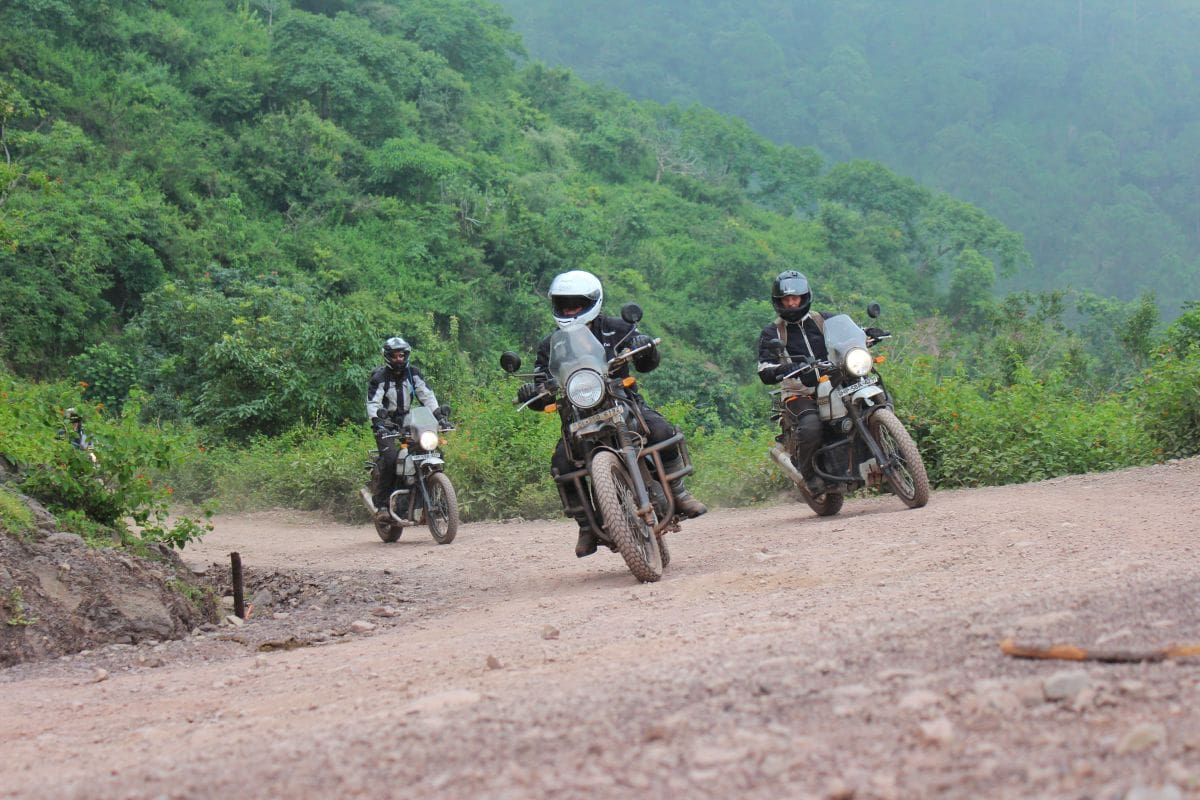
Hey, ho, let’s go!
The morning in Chandigarh was what we had all been waiting for – this was the start of the seven days of riding in Himachal Pradesh.
The weather looked nice and sunny, but it was intensely hot and humid. The good news was that the monsoon rains hadn’t caught up with us yet. The bad news was that you were sweating like a racehorse as soon as you stepped out of any air-conditioned space.
But never mind the weather – outside the hotel our rides were waiting for us. Ten Himalayans for us boys, and an Enfield Bullet for Moksha (she is too in love with her good old Bullet to jump on a Himalayan). The bikes had all clearly been used – they had some scrapes and dints – but they had been well looked after. For added peace of mind, we had Moksha’s team of three lads with us. They formed our support team, following us in a recovery vehicle carrying our luggage, refreshments for the road, spares and tools for the bikes, as well as the all-important ability to point us in the right direction if our group got separated and they found a stray tourer at the side of the road.
Our first destination was Chail – the home of the world’s highest cricket ground at 2444 metres. It seemed like a very good place to head for when you were surrounded by the heat, noise and pollution of a city the size of Chandigarh (population approx. 1 million).

It didn’t take us long to get ready. The bikes had already been checked over, so all we needed to do was stick our bags on them, decorate them with some flowers we had been presented with as we arrived at the hotel (optional, but pretty cool), get our kit on and brave the traffic.
I’m glad that I’d had a little while to get used to the traffic before riding in India. After seeing that there was method in the madness I was pretty confident that if you kept your wits about you, it was possible to get out of town alive. The first couple of miles were a bit nervous, with cars, motorcycles, tuktuks and all manner of motorised transport whizzing around you. But as with most things, after a while you get used to it, find your rhythm, and become a part of the crowd.
It was best to forget about indicators, lane discipline and other such trivial road rules. The key was to weave your way around slower traffic, and watch out for the faster vehicles overtaking you. The fun (if not necessarily clever) part was trying to keep up with the locals.
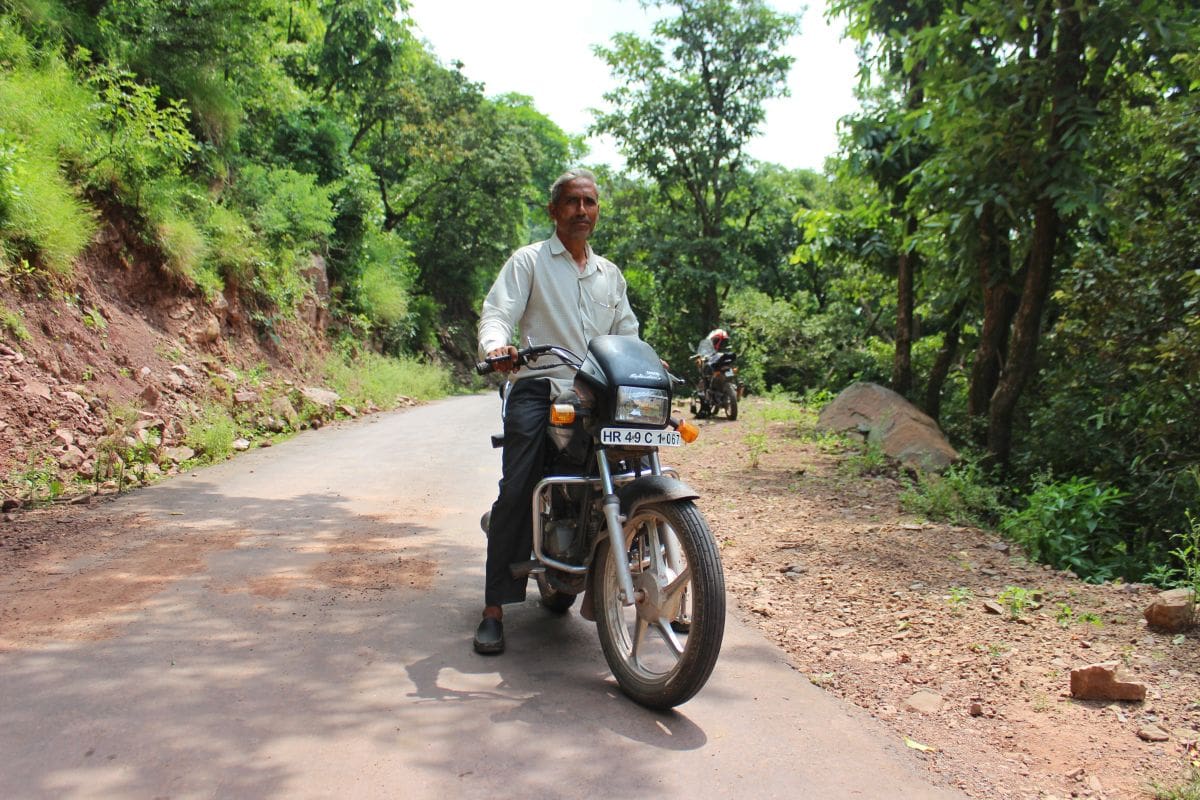
As if to remind us that this was not going to be a walk in the park, Phil’s bike developed a technical issue before we even got out of the city. The engine just stopped, and wouldn’t start again. After closer examination our support team declared it to have been caused by the tank being too full. There was also a theory circulating that the sidestand had been left down, which would have killed the ignition, but I’m sure that was just the heat playing with our minds. I mean, who would do that? Not me… certainly not four times in seven days… honest!
Once the fuelling/sidestand issue had been rectified, the Himalayan had a chance to prove itself on the busy roads of Chandigarh. And it turned out to be a fine motorcycle for this kind of riding. It’s more powerful than most of the other bikes on the roads (mainly small-capacity Hero Hondas and Bajaj Pulsars), but it doesn’t have so much power that it will get you into trouble. The gentle put-put of the single cylinder sounds pleasant and you can make decent progress on the busy streets.
Higher ambitions
Even better progress was made when we got out of the city during a brief stint on the toll road. It wasn’t a toll road like back home though: for one thing, it had a soft verge with people, cows and dogs walking right next to the vehicles, and the odd bike, car and truck trundling in the wrong direction. It was also in such condition that 50mph was an absolute top speed. Still, better than the heat and fumes of the city.
Soon we got on the small roads climbing up and down the side of the hills. This was where the Himalayan foothills started to point towards the sky, pine forests lined the roads, and troops of monkeys had their greedy little eyes on our snacks whenever we stopped for a breather.
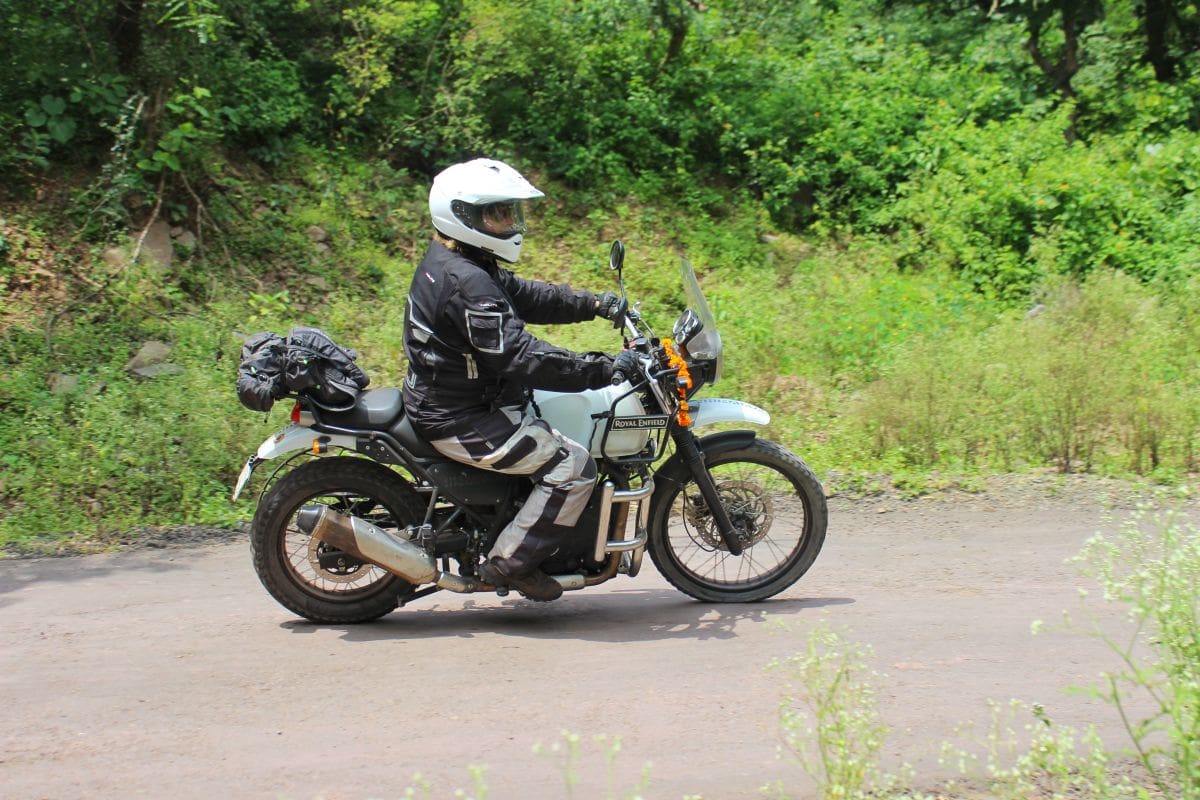
The road conditions were hugely varied, with some sections covered in pristine tarmac while others looked more like a rubble truck had just spilt its load there. The first couple of hours were pretty easy and relaxed though, and we all got into the swing of things. The group stayed together despite the riding being fairly challenging at times, with the rocky road just about visible through the thick dust being thrown in the air by our bikes. All the riders looked confident with their bikes too. There was a mixture in riding styles with some of the more offroad-minded chaps standing on the pegs, and the road-riding contingency staying seated as long as their bottoms could take the bumps.
Our first puncture occurred around the two-hour mark. No worries though, the support team were quick with their spanners and the new rubber was in place in minutes. Watching them working while the rest of us sweated profusely just witnessing the labour made me grateful that we had a support team with us. The riding was hard with the heat and road conditions, but it would be even harder if you had to do all the repairs yourself and carry all the kit too. That became even more obvious later in the day as Moksha’s Angels fixed an electrical issue that plagued one bike, and before the day was over they had another flat tyre to round up the day’s work.
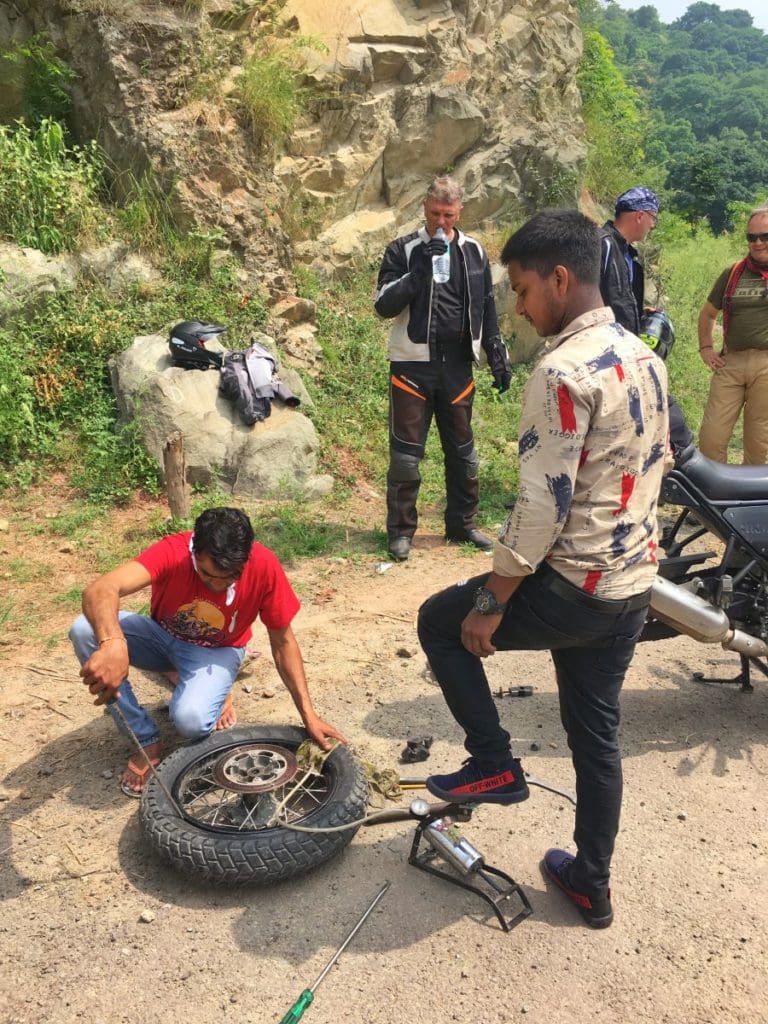
Most of the afternoon of our first day on two wheels was spent on gravel tracks. They weren’t particularly difficult to ride, and the Himalayan dealt with the rough surface easily. To remind us that for the locals this was just a regular road, we saw a selection of ratty little city bikes rattling down the track every now and again.
Getting more used to the conditions all the time, we plodded on, with a huge cloud of dust following us. These roads appeared eerily quiet after the melee of the urban roads, and you only met other traffic on occasion. The riding was tiring, but it was great fun too.
During the last hour of riding, we finally got rained on. Back at home I’m not a big fan of riding in the wet, but when it was this hot and dusty, the rain felt lovely and refreshing – just what you need when you’re starting to get tired.
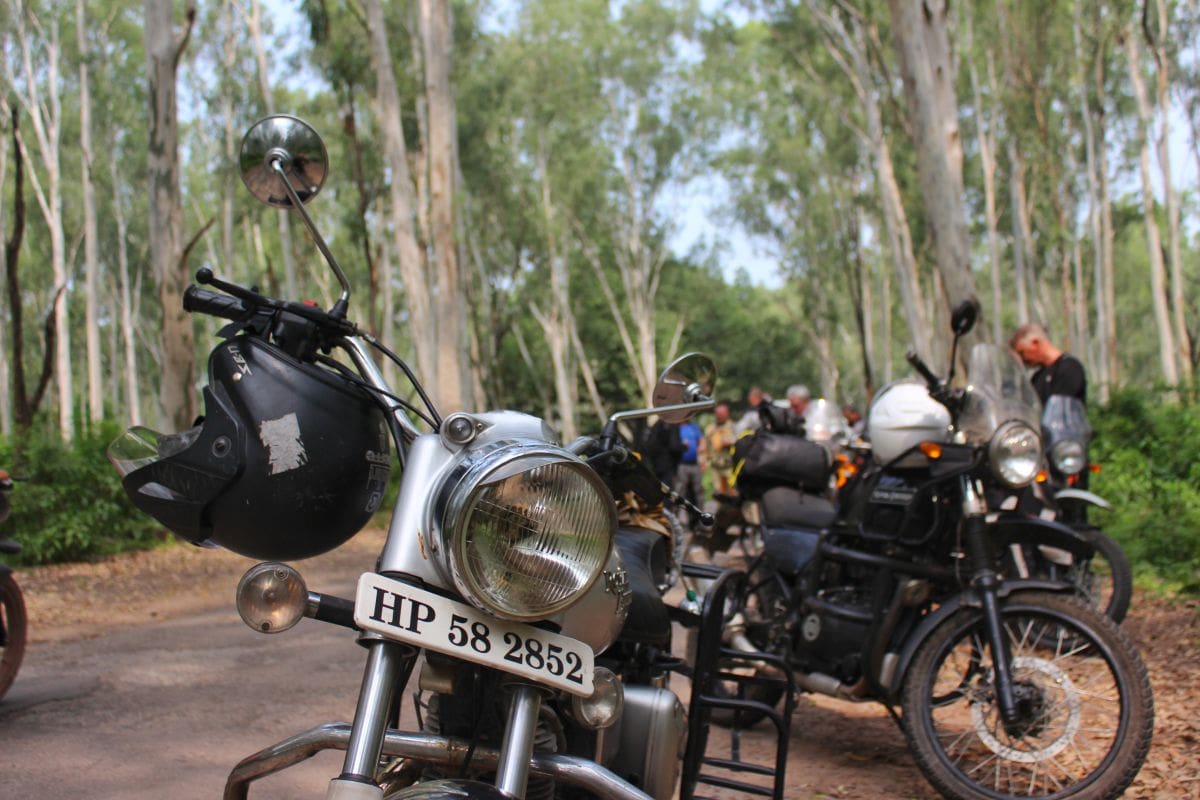
We had set off at 9am, and arrived at our hotel in Chail at 5pm. It had been a full day of full-on riding. To get a better picture of how demanding and slow our progress was, consider this: during the whole day we had only covered 137km – and we didn’t stop for anything other than a packed lunch by the side of the road, a few rehydration breaks, and naturally because of the bike problems. Still, I reckon we only lost maximum one hour for stops, which makes it 137km in seven hours. It was tough. The reward at the end of the day was that we were staying in a palace. An actual palace, that is – one built as a summer retreat by the Maharaja of Patiala during the British Raj – which now operates as a hotel. There are a number of these historic buildings in India that have been granted a licence to operate as a hotel to stop them falling into disrepair. Unfortunately in this case the plumbing was historic too, and my shower was refreshing to put it mildly. The Petes on the other hand both had ample hot water – lucky sods. Maybe it just worked for the selected few in the spirit of good old class society… Still, staying in a palace with a cold shower was better than no palace at all!
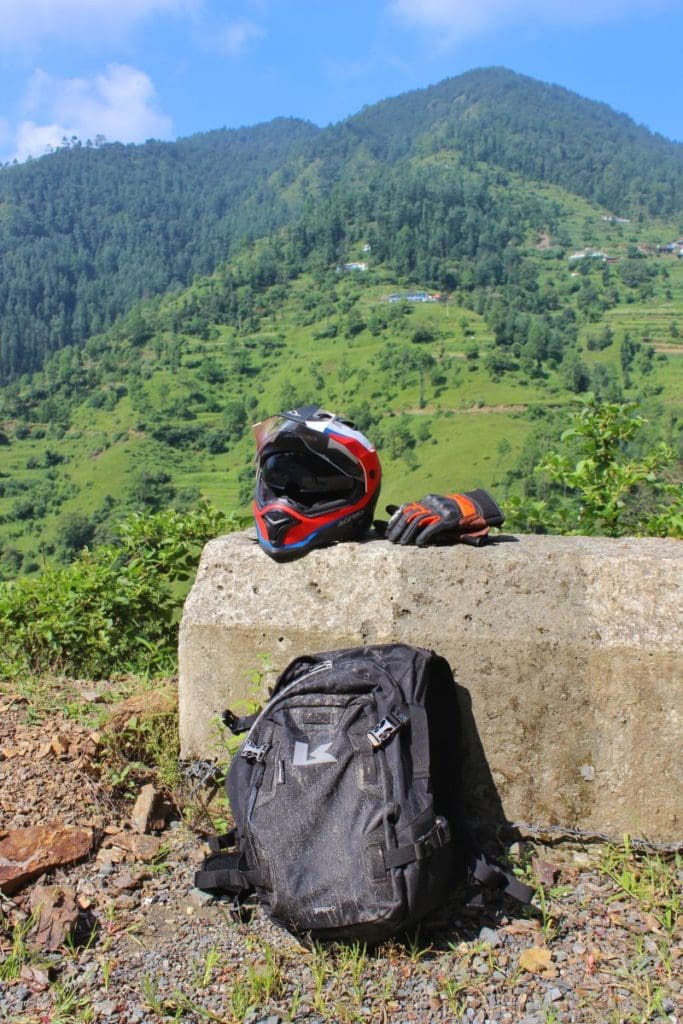
—–
Go to The Best Exotic Marigold Expedition – Day Four
More about Trailquest expeditions and offroad training
Subscribe or buy Motorcycle Sport & Leisure to get the whole story, and loads more touring and adventure.


